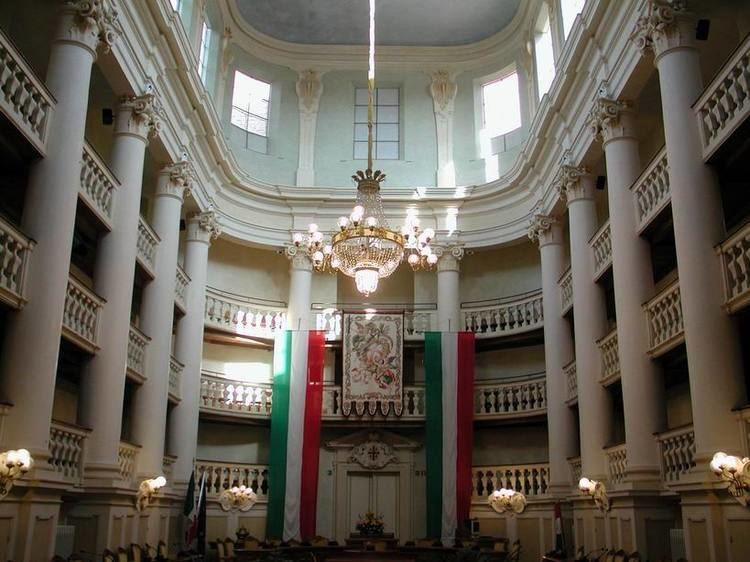 | ||
When, in 1796, the French Army led by Napoleon Bonaparte entered into Italy, both the new republic (Repubblica Transpadana, Transpadane Republic) and the military group attached to French army adopted the flags similar to the Italian tricolor. Probably, the colors have been chosen according to Legione Lombarda flag: it summed Milan city colors (red and white) to the green of Milan Civic Guard uniforms. The same colors were adopted by the Legione Italiana, formed by soldiers coming from Emilia and Romagna.
The first Italian tricolor was adopted on 7 January 1797, in Reggio Emilia, as official flag of the Repubblica Cispadana (Cispadane Republic). It was a horizontal tricolor, with red (top), white and green stripes; in the middle, an emblem composed by a quiver, accolade to a war trophy, with four arrows that symbolized the four provinces forming the Po federation; all within a crown of bay.
The Repubblica Cispadana and the Repubblica Transpadana merged into the Repubblica Cisalpina (Cisalpine Republic), which adopted the vertical Italian tricolor without emblem in 1798, even if in a square shape. The flag was maintained until 1802, after the republic was renamed Repubblica Italiana (Italian Republic); in 1802 a new square flag was adopted, with a red field carrying a white rhombus and a green square in the middle of the white rhombus.
In 1799, the Republic of Lucca came under French influence, and adopted as flag a green-white-red horizontal tricolor, up to 1801.
After Napoleon became emperor, in 1805, the Repubblica Italiana was turned into Regno d'Italia (Kingdom of Italy), ruled by Napoleon himself; the flag of the Regno d'Italia was the Repubblica Italiana flag in rectangular shape, with Napoleon's eagle on the central green rectangle. This flag was in use until the abdication of Napoleon, in 1814.
